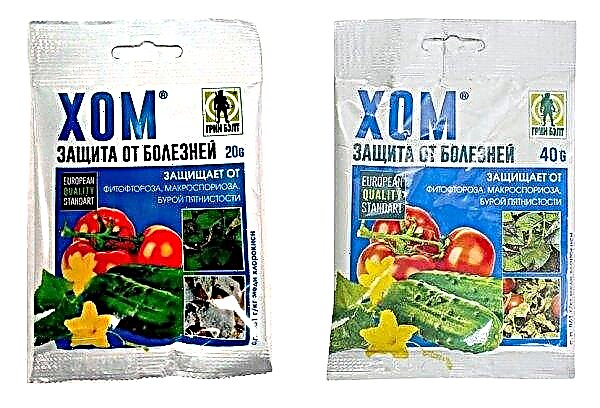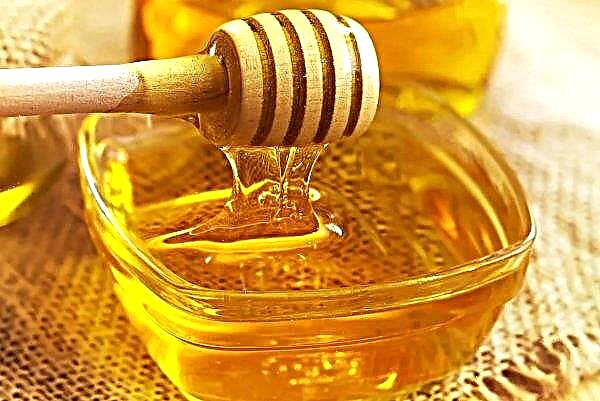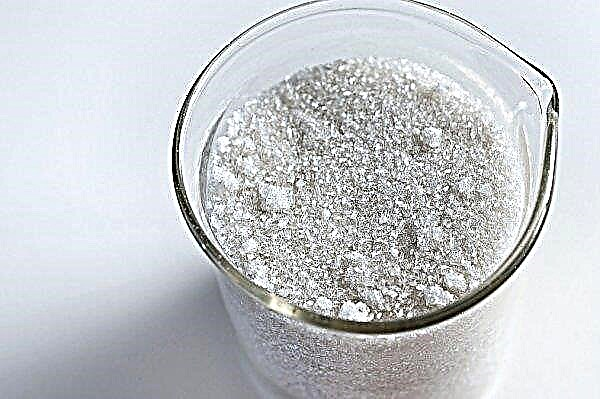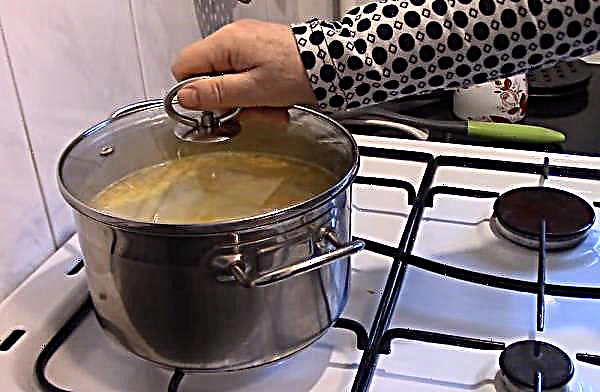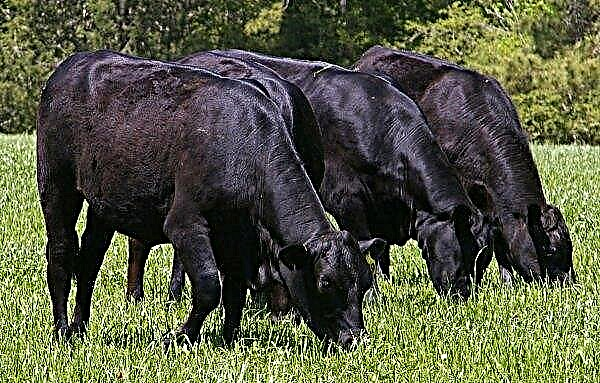Honey itself is a very nutritious and healthy product, so it is recommended to include it in the diet of not only adults, but also children. However, each variety has its own strengths and weaknesses, so in this article I would like to pay attention to the taiga variety and its benefits to the human body.
Description and characteristics of taiga honey
Outwardly, taiga honey is somewhat different from linden, sunflower or buckwheat, and above all, with its very rich coffee shade (sometimes it is close to reddish). In addition, the product is not difficult to recognize by its aroma: the traditional honey smell blends well with the sour notes of currant and sea buckthorn. The cedar version will have a coniferous shade aroma, and the main components of the Altai variety are the meadowsweet, ivan tea and raspberry, which form the main notes not only in smell, but also in the taste of the product.
In addition to the dark variety of taiga honey, there is also its light counterpart, which is obtained from meadow herbs. Usually, sage, mint, angelica and forest geranium are present in the product, although extracts of other plants, such as rapeseed, are not excluded.
As in the previous version, the aroma of the product is characterized by well-perceptible herbal notes, with a pronounced aftertaste. It is not sugary, and the process of crystallization of the product occurs uniformly, throughout the volume of the container, since the mass fraction of water in such honey does not exceed 15%. Even with prolonged storage, the liquid layer does not appear on the surface, and the texture itself does not delaminate and does not lose its attractive appearance.
Did you know? To create 100 g of honey, one bee has to fly 46,000 km, which is more than the length of the equator of the Earth.
Honey composition
The benefits of honey depend on the main components, so before buying a taiga variety, you should familiarize yourself with its vitamin and mineral composition and calorie content.
Rich Vitamin Composition
The vitamin component of the bee product largely depends on the time of year, the characteristics of the honey plant and the specific place of collection of plants.
Most often, with careful study, in taiga honey you can find such vitamins:
- ascorbic acid (C);
- Vitamin E
- vitamin K;
- thiamine (B1);
- riboflavin (B2);
- pantothenic acid (B3);
- folic acid (B9);
- biotin (H);
- nicotinic acid (PP).
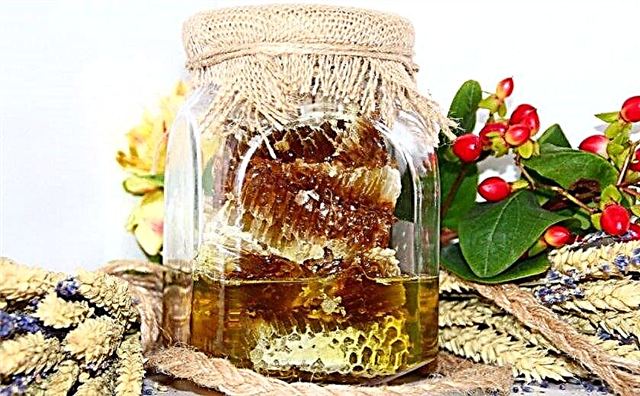
They all perform certain functions in the body, so taiga honey is recommended for use by people with a variety of problems in the body's work. In addition, it will be of great benefit to children, as it not only treats colds, but also strengthens the immune forces.
Mineral content
The mineral composition of the product also depends on the terrain and other important factors, but in almost any case, you can hope for the presence in it:
- gland;
- potassium;
- calcium
- manganese;
- magnesium
- sodium;
- sulfur;
- phosphorus;
- iodine;
- chlorine;
- cobalt;
- copper;
- fluoride.
Separately, it is worth recalling dextrins, proteins, phytohormones, saponins, tannins, alkaloids, tannins, which also to some extent have a certain effect on its beneficial properties.
The caloric content of the described bee product is 800 kcal per 1 full glass or 315 kcal per 100 g.
Important! Due to its high fructose content, taiga honey is not recommended for use by people suffering from type 1 diabetes. It can be replaced with buckwheat option..
Properties of taiga honey
A lot of information is known about the qualities of a bee product, however, it must be taken into account that the taiga variety has its own characteristics that affect useful properties and existing contraindications.
Beneficial features
- All the benefits of the described product are based on the activity of its constituent components:
- Vitamin B1 is able to provide analgesic effects and regulate the processes of natural cell metabolism;
- Vitamin B2 will be useful for people with vision problems, as it effectively relieves fatigue;
- Vitamin B3 takes part in carbohydrate metabolism, stimulates the production of hormones by the adrenal glands;
- folic acid is responsible for cell growth and antimicrobial therapy, and also inhibits the development of oncological processes;
- ascorbic acid enhances the protective functions of the body and normalizes the composition of the blood;
- Vitamin H affects carbohydrate metabolism and controls the activity of the pancreas, and therefore is the main means of preventing or treating diabetes;
- Niacin takes an active part in lipid metabolism, increasing the efficiency of the liver and lowering the concentration of glucose in the blood.
No less positive effect on the human body is distinguished by micro and macro elements. For example, iron increases the level of hemoglobin in the blood, calcium is responsible for the formation of bone tissue and tooth enamel, potassium is directly involved in the reduction of muscle tissue and controls heart rhythms. In addition, regular use of honey helps to remove toxic substances from the body, maintains a balance of fluids in tissues, reduces hair fragility and prevents skin aging.
Did you know? The first honey bees appeared in Siberia about 200 years ago, but today this region is one of the first honey suppliers in Russia.
Contraindications and harm
Some beekeepers claim that taiga honey is devoid of any negative characteristics, but in fact it is impossible to talk about the complete absence of contraindications, because it contains flower pollen of various herbs. It may well provoke an allergic reaction, so it is better for allergy sufferers not to consume honey, regardless of its origin.
Do not eat it for children up to the age of three, pregnant and lactating women. Sometimes the risk group includes residents of large cities and regions with an unfavorable environmental situation, because their weakened body often can not cope even with a small influence of allergens.
Due to the high content of carbohydrates and fructose, people with diabetes mellitus type 2 should also be careful with taiga honey (it is better not to use insulin-dependent diabetics at all). In this case, the use of the product should be moderate and dosed (not every day).
What diseases to use
Given the high environmental friendliness of taiga honey, it is not surprising that it can be used as an adjunct in the treatment of colds and ailments of various organs and systems of the human body. Consider several ways to use it in each case.
Colds
SARS and angina are the most common problems in the autumn-winter period, when the body's natural protective functions are already reduced. In this case, taiga honey can be dissolved in warm milk (1 teaspoon per 1 cup is enough) or used to gargle, previously dissolved in chilled and filtered infusion of chamomile. The same recipe is suitable for people with other throat problems, since in this form the described product reduces pain and promotes the regeneration of superficial tissues.
Did you know? The most expensive honey in the world is the Elvish variety from Turkey, which is mined in a cave of the Sarikair valley at a depth of 1800 m. For one kilogram of this delicacy, sellers ask up to $ 7,000.
Diseases of the cardiovascular system
The constituent components of taiga honey contribute to the normalization of blood flow and improve the condition of the heart muscle, which will be appropriate in the treatment of hypertension and other heart problems. To strengthen the body and eliminate all violations in its work, in addition to the treatment prescribed by the doctor, it is useful to take an empty stomach mixture of one glass of water, 1 tbsp. tablespoons of honey and juice of one lemon. The course of treatment is 1-2 weeks.
Gastrointestinal diseases
When treating diseases of the gastrointestinal tract, the appropriateness of honey therapy is best discussed with your doctor, but in most cases, regular use of the product has a positive effect on the state of the organs. For example, a mixture of honey (100 g), butter (100 g), aloe (115 g of leaves) and cocoa powder (100 g) will help with a stomach ulcer and duodenal ulcer. After thoroughly stirring 1 tbsp. a spoonful of the drug is added to a glass of milk and drunk 40 minutes before the main meal, with a regularity of twice a day.
In the fight against gastritis, a mixture of equal proportions of honey and chopped aloe leaves will help, and in some cases it is useful to add a tablespoon of grated carrots to this gruel. The medicine is consumed 3 times a day half an hour before meals.

ENT diseases, bronchial asthma
For bronchial asthma, tea from deaf nettles and honey is useful, which can be taken twice a day: morning and evening. Dry grass of the plant (50 g) is poured with boiling water (200 ml) and after cooling, a sweet product is added.
From problems with ENT organs (sinusitis, laryngitis, tonsillitis, runny nose) inhalation and nasal instillation are good. For example, with laryngitis, you can mix honey with water (1: 3), pour this mixture into a kettle with boiling water, and putting a rubber tip on the nose, breathe in fumes for 10-15 minutes.
During the treatment of sinusitis, a mixture of strong black tea, eucalyptus infusion and honey, combined in a 3: 1 ratio, often helps. The prepared composition is instilled with a nose 3-4 times a day, 2 drops in each nasal passage. An easier option for the treatment of ENT organs will be the use of honeycombs, which must be chewed for 15 minutes 2-3 times a day.Of course, before starting any treatment, it is worth considering all the possible consequences, therefore, in order not to harm your body, you should consult your doctor in advance.
Skin diseases
Traditional medicine knows many recipes for treating dermatological diseases using honey, but ointments and lozenges can be considered the most popular over the past few centuries. So, to eliminate abscesses on the palms and soles, it is worth mixing the bee product with flour and daily applying to the sore spot for 1-2 hours.
From time immemorial, honey-egg ointment mask strengthen and soften the skin of the face, applying a thin layer each time to the cleansed skin (exposure time 10-15 minutes), and getting rid of eczema helps a mixture of equal parts of the bee product and cinnamon, which after thorough mixing with thick a layer is applied to the affected areas of the body.
Important! During treatment, it is not necessary to exclude the possibility of individual intolerance to this product, therefore, if you notice redness or deterioration in the appearance of the treated area, it is worth immediately eliminating any possible effect of the described honey.
Recovery of the nervous system after stress
To resume normal functioning of the nervous system, taiga honey can be combined with St. John's wort tea (1 teaspoon of grass per 200 g of boiling water) or a mint drink (you can take only one twig on the middle cup). In the latter case, it is useful to add a few more slices of lemon (with skin). Such a drink has practically no contraindications, so it can be consumed 2-3 times a day.
For headaches, severe mental breakdown and insomnia, a good solution to the problem is to use a teaspoon of honey washed with warm milk. Within half an hour after taking a quiet sleep, you are guaranteed.
Reception for disease prevention
As tonic, taiga honey can be used daily, not only in combination with other natural gifts, but also in its own form (1 teaspoon before a meal):
- for the prevention of anemia and vitamin deficiency, a joint use with sea buckthorn will be useful (can be in the form of tea);
- honey tea with St. John's wort will help strengthen the cardiovascular system;
- a drink with honey and rose hips will be appropriate in case of a possible deficiency of vitamins and minerals.
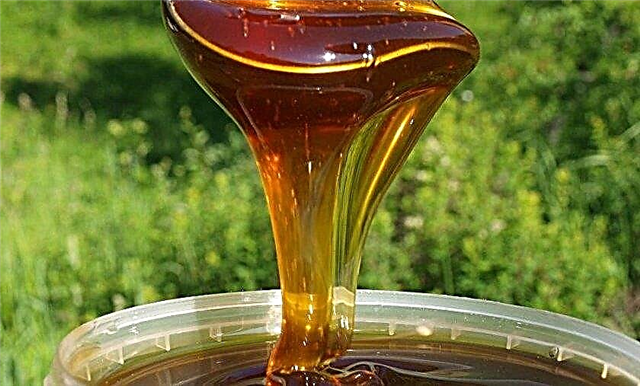
However, you can use the product in any form, not only forgetting that when exposed to high temperatures it loses a significant part of its useful properties (adding to drinks should be done only after the liquid has cooled down).
How to identify real taiga honey
Taiga honey is a rare variety of bee products, and it is very easy to fake it by replacing the usual honey plants in the herbs of any other region. The differences between the finished products will be almost invisible, so the only way to avoid cheating is to require the seller to have a quality certificate for his product, which can confirm the authenticity of taiga honey and the region where it was received.
Alternatively, you can order finished products directly from Altai, Eastern Siberia or the Far East, choosing sellers according to customer reviews or personal recommendations of friends.
Important! When buying a product, always pay attention to its consistency and viscosity. A good option should not contain grains or lumps, and its runoff on the walls of the vessel will be slow.
Terms and conditions of storage
Taiga honey retains all its healing properties only under optimal storage conditions, eliminating the possibility of crystallization and the consumption of a significant part of the nutrients. The optimal temperature values in the selected storage will be indicators within + 5 ... + 18 ° C. You should not place food cans in the refrigerator or in a too lit place, it would be better if it is a pantry with an air humidity of at least 60%. As for the capacity used, it is desirable to give preference to glass, ceramic or clay dishes.
Taiga honey is a truly unique product with a significant set of nutrients, so if you can choose, you should give preference to this particular variety.



